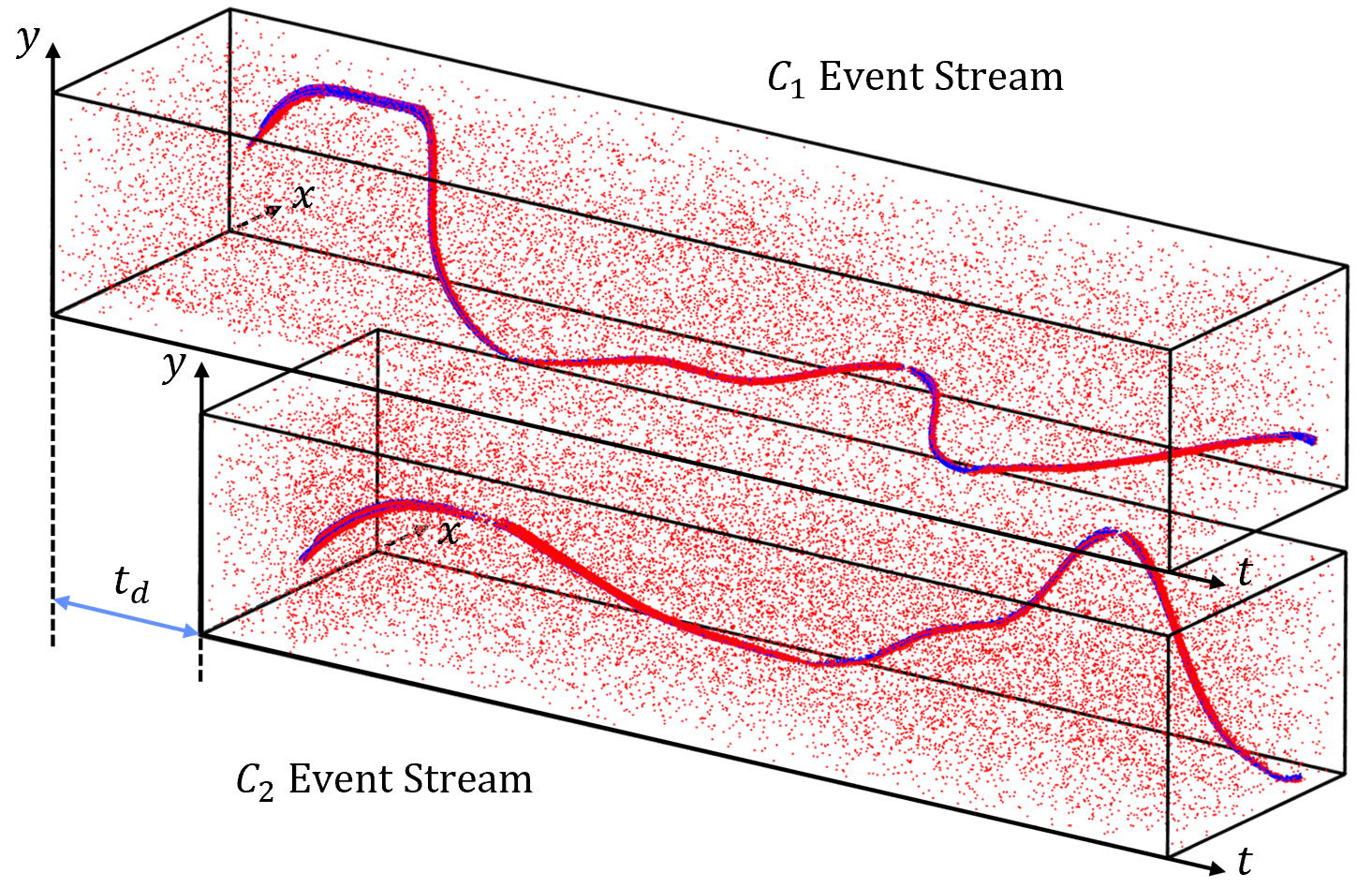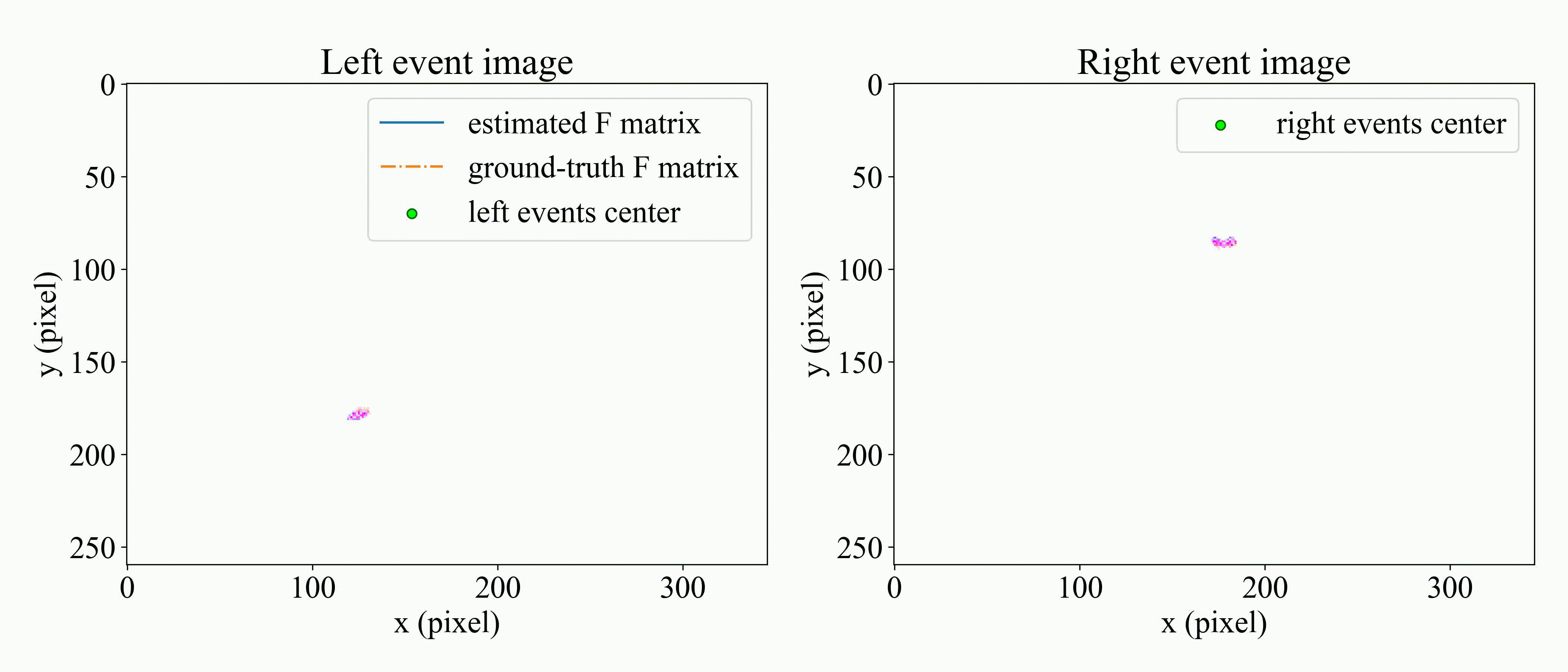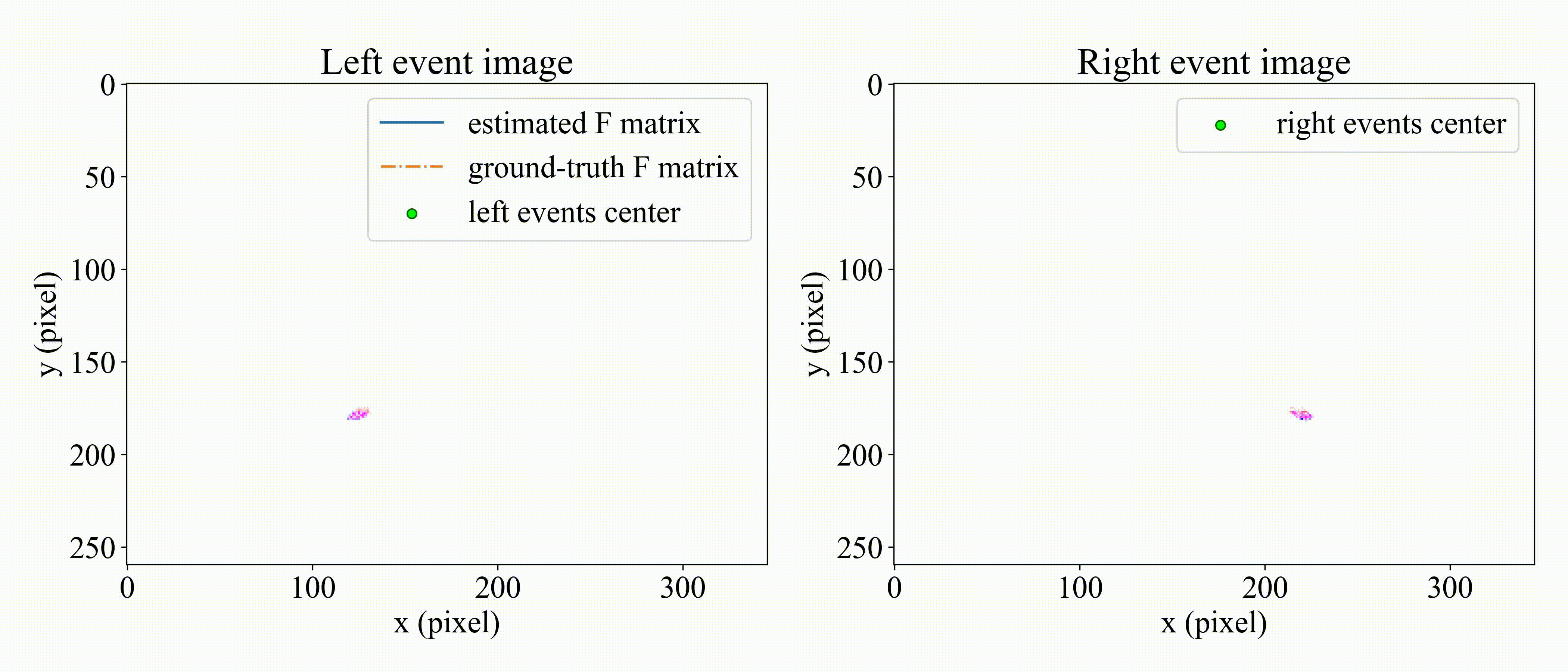This repository hosts the codebase and dataset for our research paper, "Simultaneous Synchronization and Calibration for Wide-baseline Stereo Event Cameras," currently under review for ICRA2024.
Event-based cameras offer remarkable advantages such as high temporal resolution and low power consumption but suffer from synchronization issues when deployed in multi-camera settings. Our paper introduces a software-based method to achieve millisecond-level synchronization while simultaneously estimating extrinsic parameters. Our approach eliminates the need for specialized hardware, thus making it particularly suitable for wide-baseline configurations. The robustness and applicability of our method are empirically demonstrated through extensive simulations and real-world experiments.
To get started, follow the step-by-step instructions below:
-
Dataset Download:
- Begin by downloading our datasets from our provided OneDrive link.
- Additionally, if you wish to simulate more data yourself, you can leverage the configurations we provide and use the ESIM tool, available at ESIM's GitHub Repository.
-
Environment Setup:
- Navigate to the
./configdirectory where you can find thessac.yamlfile. - Use this yaml file to create a conda environment by running:
conda env create -f ssac.yaml - Activate the newly created environment:
conda activate ssac
- Navigate to the
-
MATLAB Engine API Setup:
- Locate your MATLAB root directory. Once located, navigate to the external engines python directory by running:
cd "matlabroot/extern/engines/python" - Inside this directory, set up the MATLAB Engine API by executing:
python setup.py install
- Locate your MATLAB root directory. Once located, navigate to the external engines python directory by running:
-
Running the Code:
- Navigate to the
./srcdirectory. - To execute the main script, run:
python esim_ssac.py - The configuration settings within the script can be easily modified to suit your needs or to experiment with different parameters.
- Navigate to the
The robustness of our proposed synchronization approach is empirically substantiated through extensive evaluations, including both simulation-based benchmarks and real-world experimental validations.
- Novel software-based approach for temporal synchronization of event-based cameras in wide-baseline settings.
- Simultaneous estimation of extrinsic parameters, thus integrating these processes for increased efficiency.
- Comprehensive validation of the method through simulations and real-world experiments.
For further inquiries or questions, please contact us at [wlxing@connect.hku.hk].
Thank you for your interest in our research.



